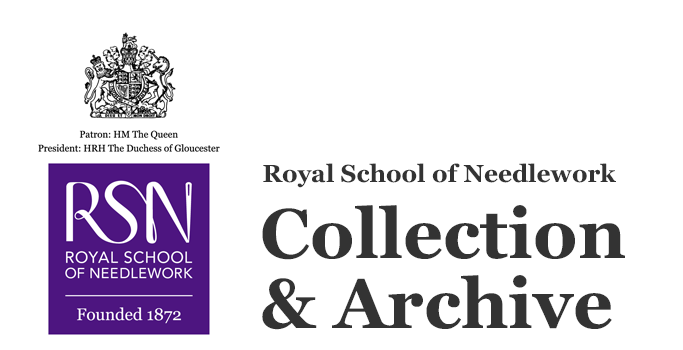Apron
Object name
Date made
1730-1760
Place made
Description
1730-1760 silk apron embroidered with floral designs and adorned with fringe.
Content description
1730-1760 embroidered silk apron with floral embroidery and fringe. The overall design of the embroidery is symmetrical with a scrolling border around three edges that includes carnations in shades of pink, purple, and blue and green foliage, all worked in silk threads. There are pink spots arranged between the various motifs. Across the centre of the apron are five sprays of imagined flowers. The central spray matches the two outer sprays, while the second and fourth sprays that flank the central one match each other. These are all worked in silk thread using long and short and satin stitch. The stems are worked in stem stitch.
Across the top of the apron are four sprays of pink tulips worked in the same way and positioned around two pocket slits. The pocket slits are embellished with a scrolling vine and the edge of the slits are trimmed with an ivory needle-made or tatted fringe that uses a four stemmed star pattern. The pockets, seen on the reverse of the apron, are made of matching cream silk.
There is further cream fringe around the three outer edges of the apron which is of a different design to the pocket edging but made using a similar technique. It incorporates two designs, one a single stem with loops of thread creating a tree-like form, the other a five petaled flower design. It is possible the fringe was added added to the apron at a later date. An additional length of this fringe survives and was attached to the apron during conservation. That conservation, which took place in November 1999, included releasing the gathering from the waistband and netting the entire piece flat.
Decorative, heavily embroidered aprons such as this were fashionable amongst wealthy British women throughout the 18th century. Fringe on such aprons is relatively rare.
Across the top of the apron are four sprays of pink tulips worked in the same way and positioned around two pocket slits. The pocket slits are embellished with a scrolling vine and the edge of the slits are trimmed with an ivory needle-made or tatted fringe that uses a four stemmed star pattern. The pockets, seen on the reverse of the apron, are made of matching cream silk.
There is further cream fringe around the three outer edges of the apron which is of a different design to the pocket edging but made using a similar technique. It incorporates two designs, one a single stem with loops of thread creating a tree-like form, the other a five petaled flower design. It is possible the fringe was added added to the apron at a later date. An additional length of this fringe survives and was attached to the apron during conservation. That conservation, which took place in November 1999, included releasing the gathering from the waistband and netting the entire piece flat.
Decorative, heavily embroidered aprons such as this were fashionable amongst wealthy British women throughout the 18th century. Fringe on such aprons is relatively rare.
Dimensions
width: 119cm
length: 65cm
length: 65cm
Materials
Stitches
Techniques
Motifs
Catalogue number
COL.1969.83
Other numbers
RSN 194
© Royal School of Needlework

